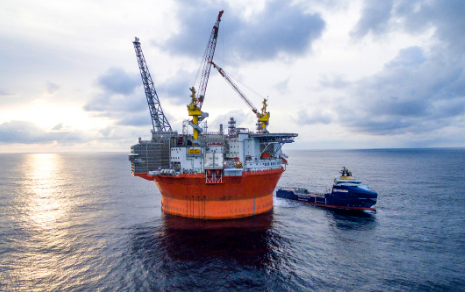Tracking Oil Leaks in Real Time
Published on by Water Network Research, Official research team of The Water Network in Technology
A new method to precisely measure hydrocarbons in the waters around oil wells has been developed by the Norwegian Geotechnical Institute (NGI) in cooperation with Kjeller Innovation.
Will this make undetected leaks a thing of the past?

Image source: NGI
Leaks from offshore oil rigs often go undetected for a long time, as even seemingly large quantities of oil are immediately diluted by the surrounding water. Previously developed sensors have lacked the precision to quickly and accurately pick up on oil leaks because of this, often allowing gradual oil releases into the surrounding ecosystem for months at a time.
In a bid to tackle this problem, the Norwegian Geotechnical (NGI) teamed up with Kjeller Innovation to develop a polycyclic aromatic hydrocarbon (PAH) sensor. It is able to collect precise data and make it digitally available in real time to operators monitoring it on the rig.
It is hoped that the increased monitoring capacity provided by the sensor will help tackle oil leaks and help prevent the environmental and economic disasters they can cause. But what makes it different to previous methods?
A more precise sensor
NGI’s new sensor is based on years of research conducted as part of the IMiRO project. Funded by The Norwegian Research Council this project was designed to investigate in-situ monitoring of hydrocarbons within water.
The PAH sensor differs from previous techniques for monitoring oil leaks because it is better able to separate pollutants from background hydrocarbons, and then provide a constant stream of information to the rig.
“The thing that is new with this sensor is that there is a separation of background hydrocarbons and potential leaks before the final measurement is done, which looks at the concentration of the PAH of the sea, to identify those which are toxic compounds that would be dissolved in the water during an oil spill,” says NGI's project manager and technical lead for contaminated sediments Espen Eek.
“This is based on similar principles as earlier methods but with an extra step that improves the method significantly.”
Background hydrocarbons
One of the problems sensors have previously faced has been the background levels of hydrocarbons in oceans. Worldwide 40% of oil found in the water comes from natural seeps in the ground, and within North American waters as much as 60% of oil in the water has seeped up from underground.
Because of these background hydrocarbons, previous sensors have struggled to precisely identify leaks from oil rigs. “One of the problems has been the lack of separation that make sensors very vulnerable to other compounds naturally occurring in the water and that are not coming from the oil spills,” says Eek.
“There are various natural organic matters actually in the seawater that are potentially damaging to such measurements. It is why it's necessary to have a more precise method that is at the same time more intricate.”
By taking into account the levels of hydrocarbons present within the water at any time, the PAH sensor identifies changes caused by leaks more accurately.
Read full article: Offshore Technology
Attached link
http://www.youtube.com/embed/flY2iB-aoxgMedia
Taxonomy
- Monitors
- Water Monitoring
- Ecosystem Management
- Water Monitoring
- Oceanographic Survey
- Oil Spill Treatments
- Oil & Gas
1 Comment
-
This measurement technique for hydrocarbons in the waters around oil wells developed is a great improvement, the Norwegian Geotechnical Institute (NGI) in cooperation with Kjeller Innovation have done great work. More is to be done to applying it in other continents with different environmental challenges too.